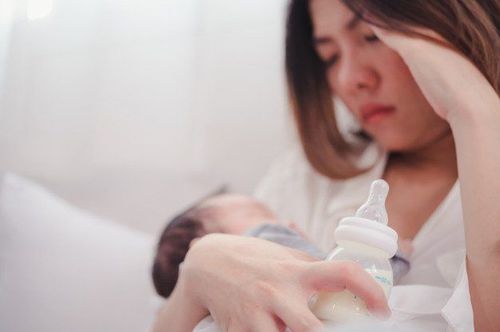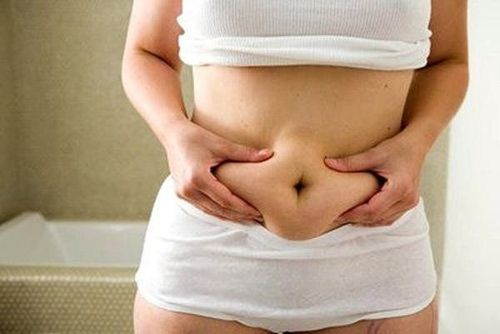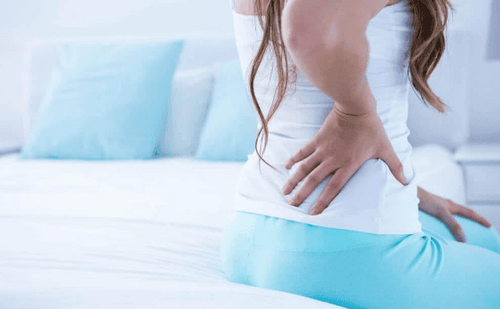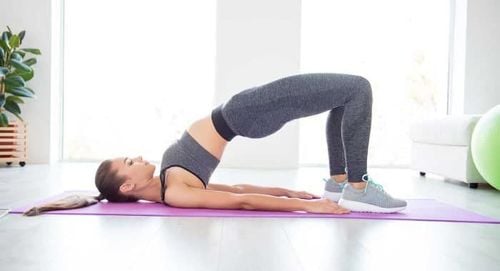This is an automatically translated article.
When to start doing exercise after giving birth will depend on whether you have a vaginal birth or a cesarean section, as well as how active you are before and during pregnancy. If you are healthy and give birth naturally, you can exercise gently right after your baby is born, avoiding strong movements.
1. How soon after giving birth can I exercise?
The American Center for Obstetrics and Gynecology (ACOG) says you can gradually start exercising after giving birth with the guidance of your doctor or midwife, as long as you feel interested. Some other health facilities recommend that postpartum women wait at least 6 weeks, until the postpartum examination ensures you are in good health.
In general, if you've gotten used to exercising during your pregnancy and have just had an uncomplicated vaginal delivery, can you start doing light exercise - like walking, push-ups and stretching, right in the days? your postpartum head is safe, as long as you don't have any pain.
However, be careful and don't abuse postpartum exercise. If you're not used to being active during your pregnancy or have tapered off your exercise routine over time, check with your doctor or midwife before resuming physical activity.
2. The best exercises for new moms
Start slowly with a gentle activity, such as walking. As you gradually regain strength, you can increase the length or number of walks in this. The best way to lose weight postpartum is to do some form of cardiovascular exercise to get your heart rate up, like brisk walking, running, swimming, or biking.
Những hoạt động nhẹ nhàng sẽ là bài tập tốt nhất để tập luyện sau sinh
If you just had a cesarean section, consult your doctor first and wait until you are fully recovered before starting a postpartum exercise program. The caesarean section takes at least a few weeks to heal, and the mother has to wait a while after that to feel better. However, walking slowly is still recommended because it will promote healing and help prevent blood clots, as well as avoid other postpartum complications.
If you want to take an exercise class, try to find a coach who has experience teaching postpartum women, or at least a female coach who has been through this phase herself. Many fitness centers and yoga studios specialize in postpartum training programs for new moms. You can try choosing a class and start with gentle movements that help tone and stretch muscles.
While exercise is great, you also need to listen to your body and not overdo it during the first few months after giving birth. Not only does your body need time to fully recover, but as a mother it also takes time to adapt and bond with your new baby.
3. Note the recovery of abdominal muscles after giving birth
Many women experience abdominal distension after giving birth due to excessive stretching of the abdominal muscles during pregnancy and labor. This condition leaves a gap between the abdomen, which sometimes cannot close and heals completely even after the baby is born. But in most cases, postpartum abdominal cramping doesn't cause any short- or long-term problems.
You can move your abdominal muscles gently and comfortably, but don't do any traditional crunches for the first few months after giving birth. These movements create too much pressure on the muscles, nor do they have the effect of restoring strength in the abdomen.
Instead, ask your health care professional or a qualified fitness coach to teach you gentler exercises that help restore and strengthen your abs. Postpartum abdominal exercises should minimize pressure on the lower back and midline (the central part of the abdomen, running from the sternum to the pelvis).
Note, some women say that a belly band (also known as a belly band) helps to get in shape faster. However, fitness experts often disagree with this view. According to them, constricting the abdominal muscles inadvertently reduces the work those muscles are supposed to do, resulting in them becoming weaker. Postpartum women should only use the waist belt as a supportive garment when there is a problem in the back.
4. Does postnatal exercise affect breastfeeding ability?
The answer is no. As long as you drink plenty of water, even vigorous exercise shouldn't significantly affect the quantity or composition of breast milk. But you should avoid exercises that cause chest pain.
Remember to wear supportive sports bras during exercise and try to breastfeed before exercising so that your breasts don't get uncomfortable. If your breasts feel sore during postpartum workouts, try wearing two fitness bras for extra support.

Tập thể dục sau sinh không gây ảnh hưởng tới số lượng cũng như thành phần sữa của mẹ
5. Signs that the mother has been active too soon
Excessive physical activity in the first few weeks after giving birth can cause problems that require you to visit the doctor. Some signs that the body is still not ready to exercise after giving birth are:
The discharge becomes redder and starts to flow more. Start bleeding again after it has stopped. Pain of any kind with postpartum exercise, from joints to muscles. It is advisable to reduce the intensity or pause the exercise if you:
You feel exhausted instead of energized. Feeling unusual muscle soreness for a long time after a workout, affecting your body's ability to move. Muscles tremble when used. Morning resting heart rate increased by more than 10 beats/min compared to normal. Checking your heart rate in the morning before you get out of bed each day is a useful indicator of your general health. Rising higher than normal is a sign that you are doing too much and need more rest.
In summary, women should wait at least 6 weeks and preferably several months before attempting to lose weight postpartum. Do not aim to lose more than 0.5 kg per week, especially if you are breastfeeding. Starting a postpartum exercise program and diet too soon can affect your mood, energy levels, resilience, and milk supply. If you are patient and give your body time, you can still lose significant postpartum fat naturally.
Please dial HOTLINE for more information or register for an appointment HERE. Download MyVinmec app to make appointments faster and to manage your bookings easily.
Reference source: babycenter.com













